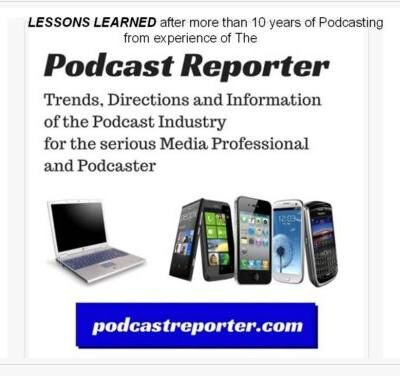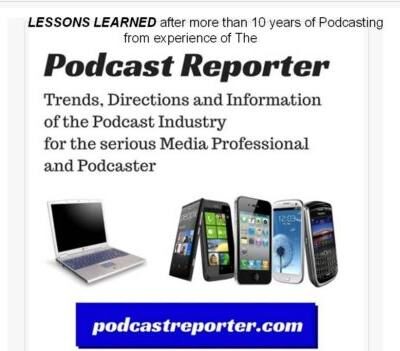Podcast: Play in new window | Download

In this episode of The Podcast Reporter, we discuss a couple of styles of podcasting for those who have already launched their shows — and sometimes, these may appear to be extreme opposites. This type of debate has been active since 2004 when the podosphere took shape.
One style is that of a planned workflow, with planned topics or interviews. The key elements for the podcaster here are:
- selecting a topic that will provide VALUE to the listener;
- planning the sub-topics or elements of the discussion;
- planning for quality show notes for each episode;
- planning for good SEO aspects of the episode for the show;
- ensuring that the recording will result with the best audio possible;
- if interviewing, ensuring that a release is provided and agreed to;
- if with a co-host, ensuring that they are both on board with the topic, style, format, flow and questions to impact the episode;
- planning for good transitions (either in spoken audio or music);
- after recording, doing the best editing possible for quality episodes;
- planning for workflow steps to ensure quality mp3 is finished;
- uploading the episode to your media host provider;
- planning for quality announcement to your media channels or social media platforms that you have published an episode;
- preparing follow-up tasks or surveys or feedback conversations for your audience;
- receiving, responding and following up on your own replies to any feedback from your audience;
- planning how this episode will impact your brand and your show and your business;
- preparing for the next episode with VALUE to listeners in mind.
Another style is the age-old “spontaneous” type, where the podcaster usually will:
- have very little or no planning (not even with a co-host or interviewee);
- just hitting the “record” button and begin talking;
- being able to change topics or go to a spontaneous discussion other than what was started;
- having no planning for music or audio intros or outros;
- having no plan for timing or length of the episode;
- finally, stopping the recording when completed;
- doing very little or NO EDITING, because the podcaster wants to deliver “reality” content that has not been altered in any way;
- uploading to the media host and
- publishing the episode with a title that is conceived just prior to publishing, usually not planned;
- having no plan for follow up or feedback from any possible audience.
- going on to the next episode in the “stream-of-consciousness” method for more “reality” podcasting.
So, if you are a hobby podcaster and are just starting, you may be deciding which type of podcaster you can be.
With all the courses and videos that instruct you how to prepare for a podcast episode, and then how to launch your podcast show, you may be confused about which is the best way to start and proceed.
For this podcaster, I have had a background in events and communications marketing. Thus, I have seen the value in planning and preparation — the essence of strategy and discipline to launch a show with an objective of audience growth and monetization.
So, in this relaxed atmosphere of communications due to the mandates of the phony virus crisis, we would like to ask you to reflect for yourself which type of podcasting you will like to do in the near future.
Thank you for your attention.
Copyright (c) 2020, Matrix Solutions Corporation . All rights reserved.
